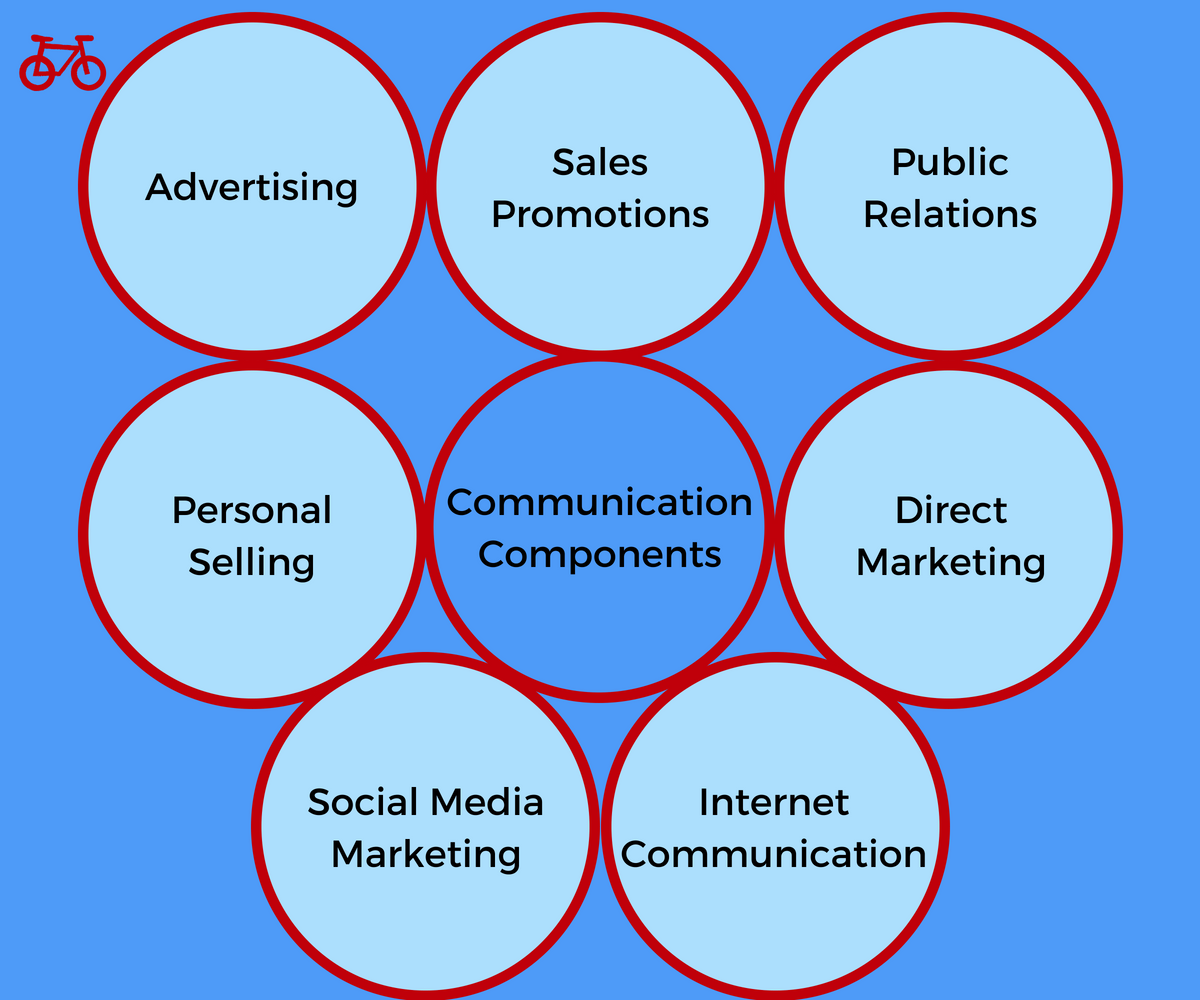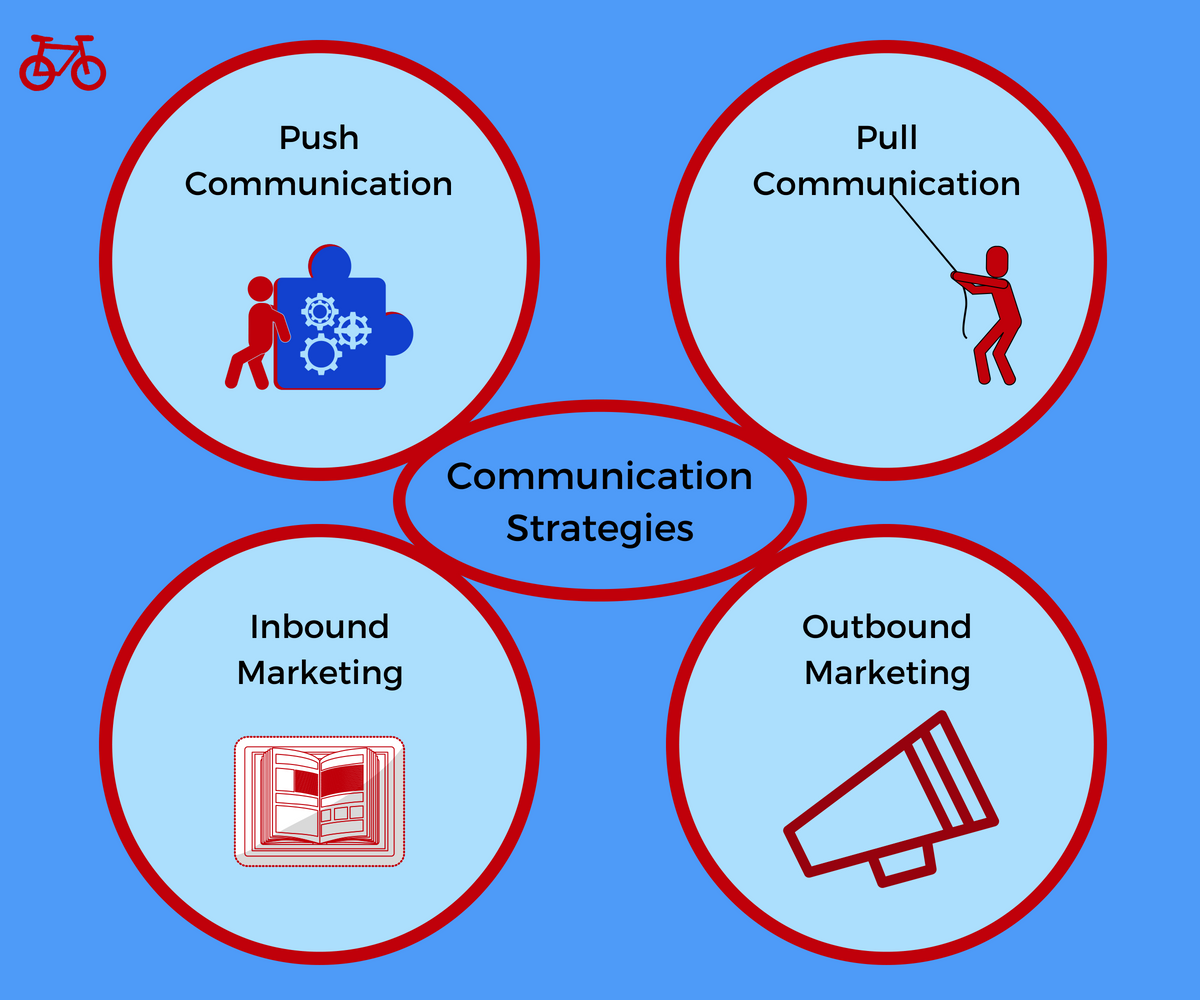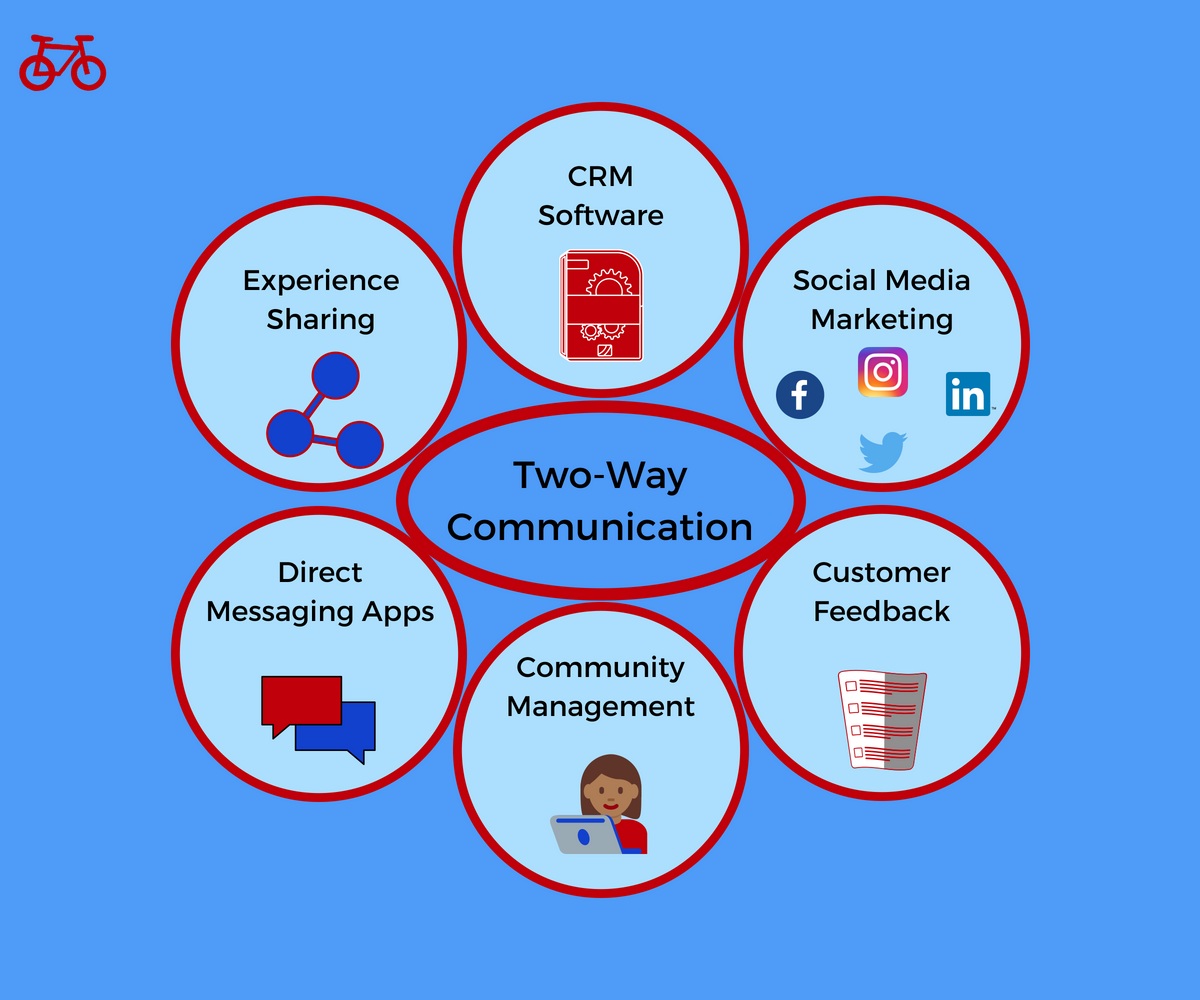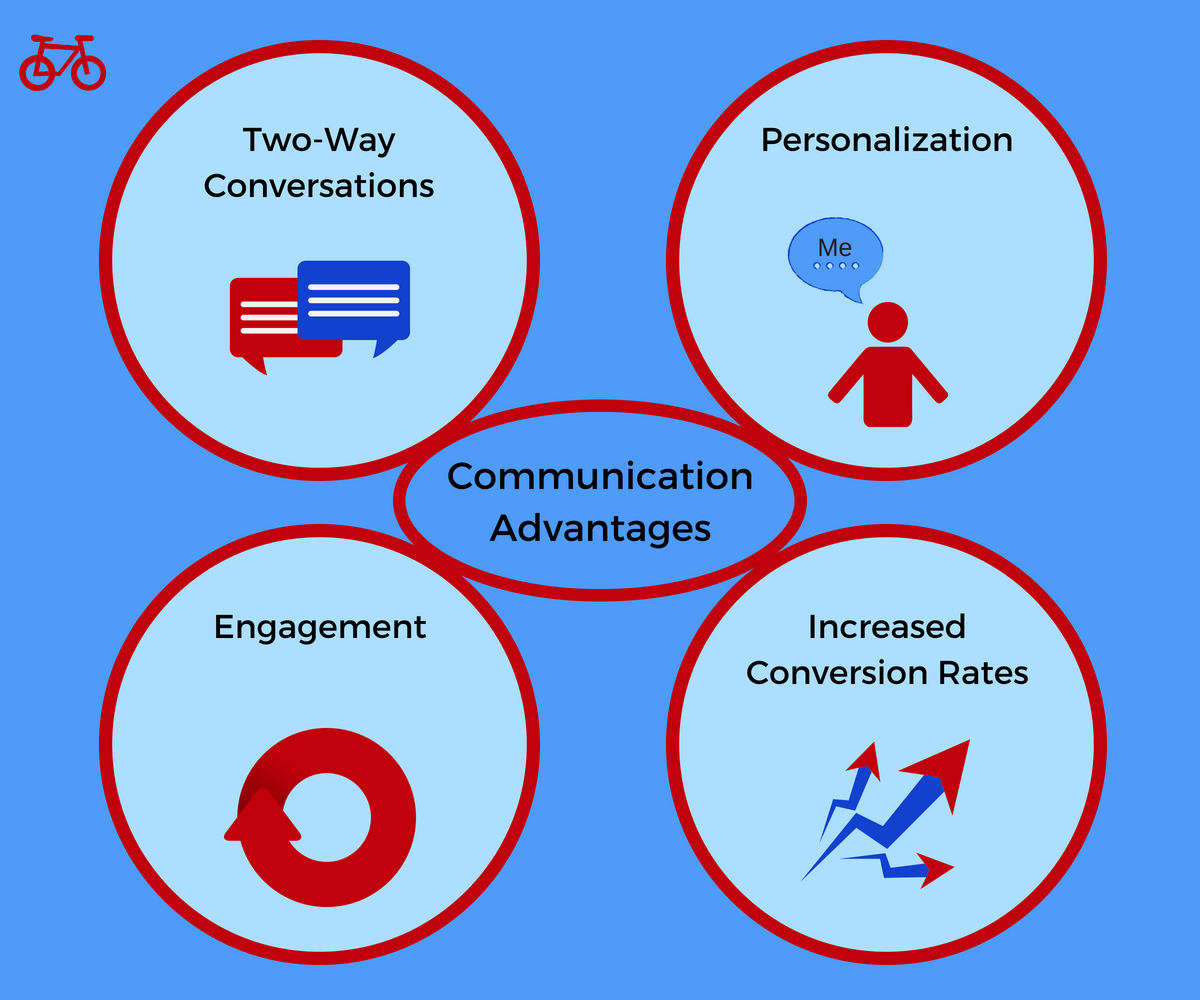Communication is a component of the 4Cs marketing mix. It replaces the traditional marketing mix ‘P’ of promotion.
Communication places a focus on communicating with customers. Creating a two-way dialog. This prevents companies from being focused on the company and sending broadcast messages that are ignored. While it may seem like a simple shift, it is not that easy to execute.
Thus, we will discuss how it fits with the marketing mix below.
What is Communication?
Communication is the process by which a company communicates with their customers.
As a component of the 4Cs marketing mix, this not only includes the traditional one-way messaging flow of promotion. But, it also includes the concept of two-way communication with customers.
Thus, communication is the push to customers regarding promotions and product information. Also, it’s the feedback that a company receives from their customers.
It is this complete communication loop that the 4Cs marketing mix addresses.
What is Marketing Communications?
Marketing communications is the facet of marketing that addresses the components of communication and promotion. This is the area that manages the traditional marketing promotions mix. Which are the areas of advertising, sales promotions, public relations (PR), personal selling, and direct marketing.
The 4Cs marketing mix takes these traditional marketing communication activities and adds the necessary two-way communication elements. This includes channels such as social media, chat, and tools that provide customers the ability to communicate with the company.
Marketing communications manages the communication mix and the channels that allow companies to push and receive communication from customers.
The Components of Communication
Communication with customers has many components. While looking at it within the 4Cs marketing mix framework, we need to take the original promotions mix elements from the 4Ps marketing mix and add components that allow our customers to communicate to us. That provides an even more complex environment that marketing communications needs to manage.
The following are the general components of communication.

Advertising
Advertising is the channel where companies will broadcast their non-personal messages to communicate with customers and prospects. This is a channel that only works for one-way communication.
This is a channel where companies entirely control the messaging and the conversation. Regardless of advertising being a one-way communication channel, it is an important part of communication.
Sales Promotions
Sales promotions are short-term communication tactics with customers. They are incentives that companies use to cause customers to act.
In the traditional sense, this is a company focused component of communications. But, these promotions can also be used to benefit customers through loyalty program coupons. This still has the company as the focus, it does also benefit current customers.
Public Relations
Public relations (PR) is the component of the marketing mix that manages activities companies participate in to influence the perception of their brands. These are activities such as interviews, speaking engagements, sponsorships, or events.
While companies have control over the messaging, depending on the channel, there is also room in PR to create dialog with customers. It does not have to be a channel used exclusively for pushing communication.
Thus, PR can be used in a way that satisfies the 4Cs marketing mix aim of communication.
Personal Selling
Personal selling is the communications component that uses sales representatives to sell products and services directly to consumers.
While personal selling is a component of communications that focuses on pushing products. This is a customer interaction channel that can focus on the customer’s needs, as well as provide a two-way communication channel.
Direct Marketing
Direct marketing is the communications component that is marketing directly to end users and customers. Direct marketing is a great component to incorporate two-way communication channels. Also, it provides a great opportunity to put the focus on the customer.
Direct marketing contains channels such as mailing campaigns, emailing campaigns, telemarketing, mail order, text messages, social media, websites, and various forms of online content and advertising.
For communication though, we break out many of these activities so there can be a direct focus on the customer and two-way communication.
Social Media Marketing
Social media is becoming its own component of communication. Primarily, because it can be used in the traditional promotions mix. But, it can also be used as a two-way communication platform.
Social media is a powerful communication tool for companies to both, push a message they want to control, and it provides an effective way to have a dialog with customers. This aspect allows social media to be a great component of the communication mix in the 4Cs marketing mix theory.
Internet Communication
It’s not an official component of the marketing mix. But, there are new technologies and channels that are allowing customers to more effectively communicate with the companies they purchase from, there should be a general communication component. Many of the tactics and channels could fit in direct marketing. But, it makes sense to have them here due direct marketing’s traditional focus on one-way.
With the internet, this includes channels such as website chat, chat support for internet-based products, text messaging, phone, email, and surveys. All are channels that are providing companies with channels, tools, and tactics to better communicate with customers.
Communication with customers is becoming increasingly important. And with traditional one-way tactics becoming less effective, it makes more sense to place the customer at the center or our efforts. While the customer is our focus, we can begin to create two-way conversation strategies and tactics.
Communication Strategies
Communication strategies are the ways we decide to communicate with customers. This includes where we communicate with our customers, what we communicate with them, and how we communicate with them.
This is when we determine how much focus we are going to put on pushing our messaging in a one-way conversation. Or, if we will put our focus on creating two-way conversations with our customers.
The following are some of the communications strategies we can choose from.

Push Communication
Push communication is an aggressive strategy. This places the companies message at the forefront and pushes it in front of our customers. These are the one-way communication strategies that a company will employ.
While communication in the 4Cs marketing mix looks to place the customer in the center, there is still a place for push strategies. At times, customers may not know a product exists for their specific problem.
But, when using push strategies, it is always crucial to keep the customer at the center of the strategy.
Pull Communication
Pull communication is a set of demand generation communication strategies. This is communicating messages that attract interest for your product. The goal is to “pull” customers towards our products.
This strategy of communication effectively keeps the customer at the center. And, it lends itself to creating conversations with customers and not just pushing one-way conversation messages on our customers.
This is a crucial strategy in effectively executing the communication component of the 4Cs marketing mix.
Inbound Marketing
Inbound marketing, which is a term coined by HubSpot, is a form of pull communication. But, this goes further than just demand generation. It is an entire marketing process.
Inbound marketing uses internet-based tactics, such as content marketing and social media, to pull customers to products. It is about being present where customers are when they are looking for a product like yours.
This is a pull strategy that tries to not interrupt customers with push communication tactics and strategies. After coining the term, HubSpot has built their entire business, successfully, on this model.
Outbound Marketing
Outbound marketing is a traditional take on marketing that combines push and pull marketing strategies. But, it is a strategy that relies more heavily on push communication strategies like advertising, events, and direct marketing.
When using communication from the 4Cs marketing mix, this strategy has a place. Although outbound marketing is focused on push strategies, these strategies and tactics have a place when done with a customer focus.
The various communications strategies each have a place in the communication component of the marketing mix. While some lend themselves better to the customer centric communications component, they can all be applied.
It is important to understand each strategy and create the mix that produces the best results for your company.
What is Two-Way Communication?
Two-way communication, when looking at it as a component of marketing, is creating conversations with customers. These are conversations where the company talks to the customer and listens to the customer.
This is an increasingly important concept in marketing communications, as customers are becoming less receptive to a one-way push from companies. Thus, creating a listening mechanism in our strategy is important.
Not only is two-way communication important from a communications perspective, but as we shape our brand, how we implement two-way feedback loop impacts the perceptions customers have of our company.
Thus, when considering the communication component of the marketing mix, it is essential to structure it in such a way that we generate conversations with our customers.
Two-Way Communication Strategies
Two-way communication has to happen on purpose. It needs to be a strategy. There are many strategies, tactics, and tools to make that happen. The goal, as we discussed above, is to create conversations with our customers.
Some of the two-way strategies you can use are as follows.

Experience Sharing
An effective way to create conversations with customers is by having customers share experiences. Whether that is sharing an experience using the company’s product, an interaction with the product, or just creating campaigns that get customers to share.
These are effective ways to generate conversations. We see consumer brands doing this more and more. But, business to business brands can effectively leverage this strategy as well.
Effective Customer Relationship Management Software
To effectively create conversations with customers, certain tools are needed. In this case, an effective customer relationship management (CRM) software is necessary. An effective CRM allows you to integrate all your social media accounts and post directly from the CRM. Then, you can monitor your conversations in one place.
Next, if your CRM is integrated, this provides one place to analyze your data, and pull triggers for speaking with customers. It is crucial you have an effective way to use data to create the necessary conversations for your business.
Social Media Marketing
Social media marketing is one of the best modern strategies for companies to engage in conversations with customers.
In the early days of social media, companies saw it as an effective way to broadcast their message. But, this has since proved itself ineffective. Now, the great social media marketers are starting conversations with their companies.
Social media is one of the most intimate channels companies have to interact with their customers. Then, it makes sense to use it as a platform for starting two-way conversations.
Direct Messaging Apps
Direct messaging apps, if a company is given the permission with their customers, is an excellent communication channel. As email open rates and click rates continue to drop, direct messaging is an effective channel, if given the opportunity.
This can include text messaging apps like WhatsApp or website chat systems. Whatever the particular tool, the strategy is having a conversation with the customer.
Community Management
Community management is a strategy that helps companies foster a following and create their true fans.
Tactics in community management are things like meetups, leveraging social media, utilizing evangelists, and working with influencers. All these tactics help engage the community. And, engaging with your community requires effective communication.
Customer Feedback
If a company is trying to effectively create a two-way conversation, it’s inevitable that customer feedback is necessary. This is providing a forum for customer feedback, as well as encouraging it.
Customer feedback can be as formal as survey’s. But, it can also be as informal as just having conversations with customers. In either situation, it is about having a conversation and getting customers to provide feedback.
Two-way conversations are critical when we are trying to effectively communicate with customers. This is a critical point in the communication component of the marketing mix. With some of these strategies, you can begin having better conversations with your customers.
The Advantages of Communication
Communication is typically seen as a replacement for the traditional promotion component of the marketing mix. It requires a shift in how we think about talking to our customers.
Communication, like all the components of the 4Cs marketing mix, puts the customer at the center. This means not having one-way push. Rather, engaging in conversation.
Using the communication component has many advantages. The following are some advantages.

Two-Way Conversations
The first advantage of communication is moving from a one-way conversation to your customers to a two-way dialog. This is a difficult transition, as the ROI on two-way conversation is difficult to measure.
That being said, there are many case studies to prove that two-way conversation communication increases engagement and brand perception.
Personalization
With the customer at the center of our communication efforts, personalization becomes a key component. Gone are the days where adding first name and company name to an email are sufficient personalization tactics.
With more tools, we can add deeper personalization. To effectively operate in this framework, it is necessary. Thus, implementing personalization is a huge advantage.
Engagement
If we are placing the customer at the center of our communication, creating a two-way conversation, and personalizing our message, we can have more engaged customers. As our customers have conversations with us and feel as though they are active contributors to a conversation, then engagement increases.
Using the communication framework helps to facilitate increased engagement from our communities.
Increased Conversion Rates
The communication component, with its intent of putting the customer in the center, increases conversion rates.
Creating customers and a community that is engaged is crucial. With more options for our attention, engagement is the biggest way to get customers to think about our company. Then, when they have, the conversion is better.
We do this by applying the communication component of the marketing mix.
Communication is an increasingly important aspect of marketing. This is not just communicating to customers and prospects in a one direction. But, creating two-way conversations that have customers at the center of our efforts. It is a marketing mix component that forces us to have a shift in mindset. We use it to communicate with customers, while having their interests at the center of our efforts.
